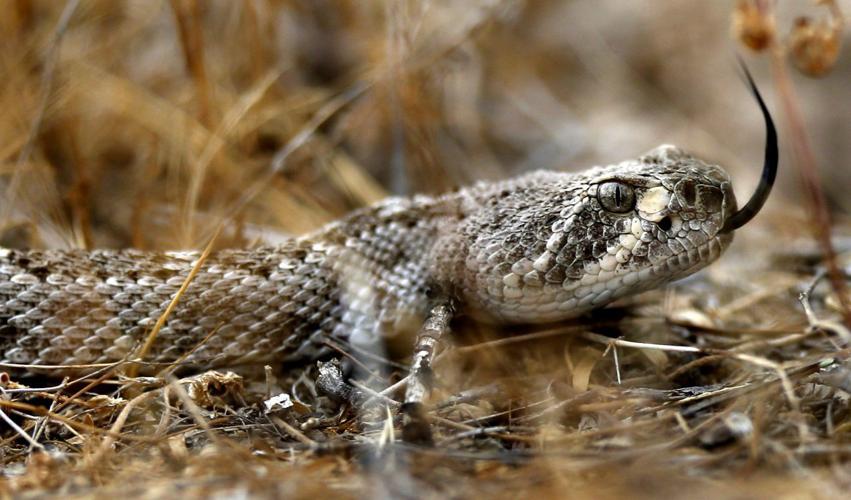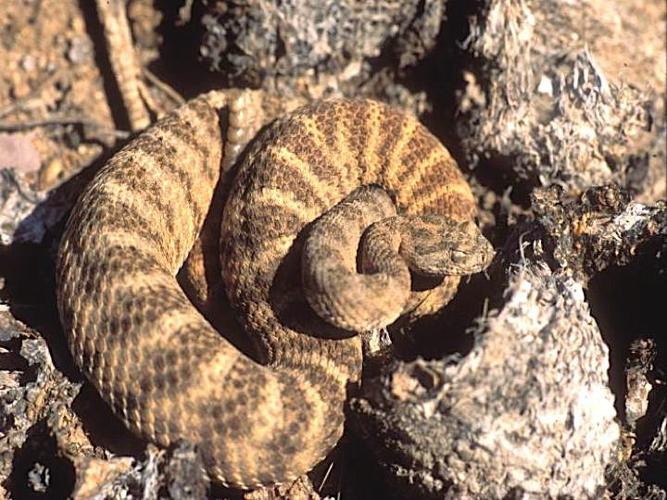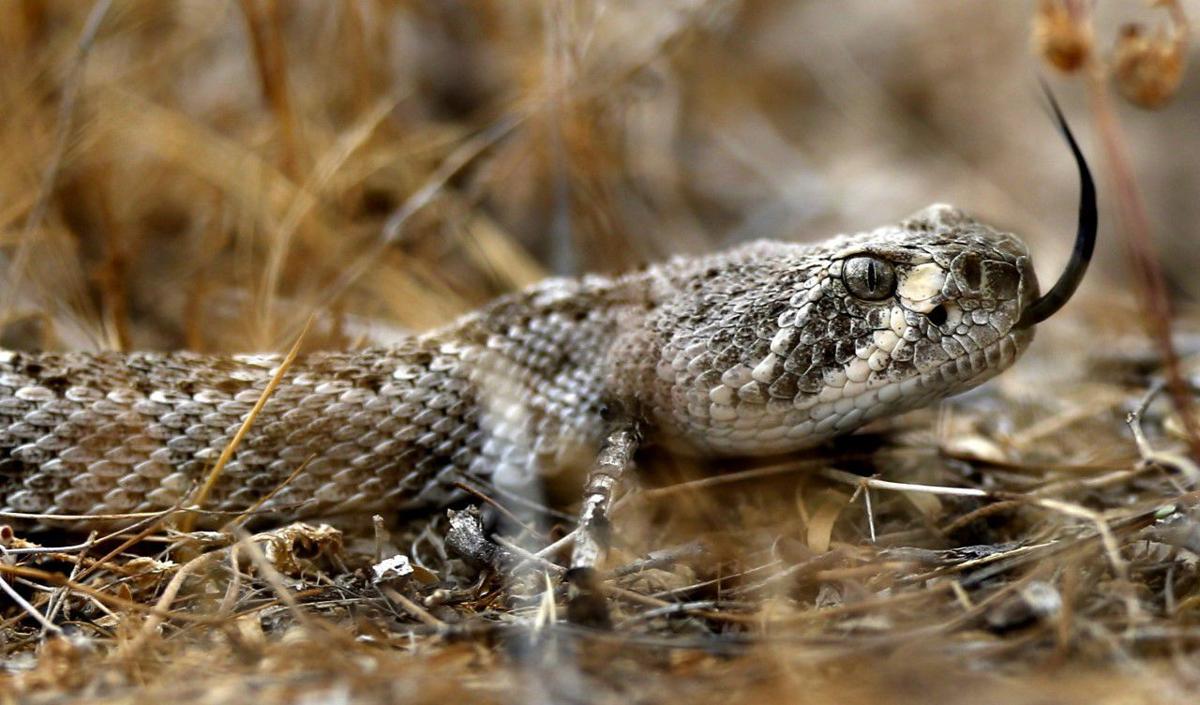As cooler weather sets in throughout Southern Arizona, rattlesnakes are slithering into their dens for the winter.
Arizona is home to 13 species of rattlesnakes, with four or five species living in the Tucson area, including the tiger rattlesnake, western diamondback rattlesnake, black-tailed rattlesnake, Mojave rattlesnake and the sidewinder. The Sonoran Desert region has more species of rattlesnake than any other region in the world.
In the cold-weather season, snakes shut down their systems to conserve energy and prepare for reproduction through a process called brumation, a hibernation-like state which causes the metabolism to slow way down.
According to Matt Goode, assistant research scientist in the School of Natural Resources and the Environment at the University of Arizona, snakes are ectotherms, animals whose internal body temperatures do not remain constant like mammals. Although snakes are very good at behaviorally thermoregulating to keep their body temperature stable, they rely on environmental temperatures as well.
“As it turns out, being an ectotherm has some advantages, like being able to essentially shut down your system and save energy rather than spending it on trying to stay warm,” Goode said. “Rattlesnakes are very long-lived — about 15 to 20 years, or more — relative to their body size because they’re really good at conserving energy. They will stop feeding and enter into a sometimes long period of inactivity.”
When rattlesnakes begin their hibernation period and how long they stay in their dens during the winter depends on the species, Goode said. Smaller species, such as the tiger rattlesnake, might go into their dens as early as October, but larger species, such as western diamondback rattlesnakes will go into their dens later, on average.
Where and how snakes den also varies by species and can be anywhere from rocky outcrops to small caves that form on the side of washes. According to Goode, some rattlesnakes, like the western diamondback, actually den in groups of up to 10 to 20 individuals or even among other reptiles such as Gila monsters and desert tortoises.
“In colder northern climates, rattlesnakes can form huge denning aggregations,” he said. “I studied prairie rattlesnakes in Wyoming, where one den contained over 600 individuals. In really cold climates, the ground can freeze up to 4 to 6 feet deep, and the reason there were so many snakes in one spot is probably because suitable dens sites are limited.”

Smaller species, like this tiger rattlesnake, might go into their dens as early as October.
IMPACT OF CLIMATE CHANGE
Researchers are studying the potential impact of climate change on reptiles and amphibians because, as ectotherms, they depend heavily on environmental temperatures.
According to Goode, if temperatures continue to warm, it could change when snakes go into their dens and when they come out.
“Climate warming could affect the cues that cause rattlesnakes to come out of their dens, because if warmer temperatures tell them it’s time to come out, they’d end up coming out sooner, which may increase the risk of exposure to cold spells or may not coincide with when their prey are more active,” he said.
Snakes use hibernation as a way to conserve energy, so shorter winter months could affect their ability to reproduce and their lifespan overall.
“A warming climate could change the timing of their reproduction as well,” Goode said. “For rattlesnakes, winter triggers hormonal changes that allow them to become reproductively active, so they actually need the cold to allow them to produce certain hormones that are important for reproduction.”

If you see a rattlesnake out during wintertime, it might be because it is sick and might need to bask to fight off infection.
RESTLESS SLEEPERS
Some people report seeing rattlesnakes out during the wintertime. According to Goode, researchers aren’t exactly sure why this happens, but it’s much more common to see young snakes out during colder weather than older snakes.
“The other reason is that the snake might be sick,” he said. “It may have some kind of bacterial infection, so it’s forced to come out and bask to keep its temperature elevated, fight off infection and maintain the healing process. This is called a ‘behavioral fever,’ and it’s been documented in tortoises as well. As with other systems, the immune system is also temperature-dependent.”
Even if you spot a rattlesnake wandering around this winter, Goode said it’s important to let it be.
“It’s important to note that the overwhelming majority of people bitten by rattlesnakes are bitten because they were messing with the snake,” he said. “If you stand back and give the snake plenty of room, it will likely disappear, and you’ll never see it again.”







